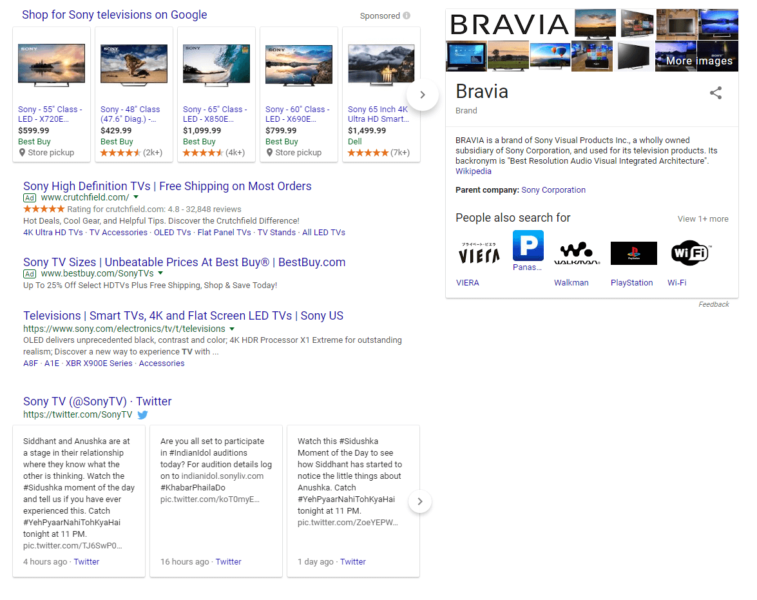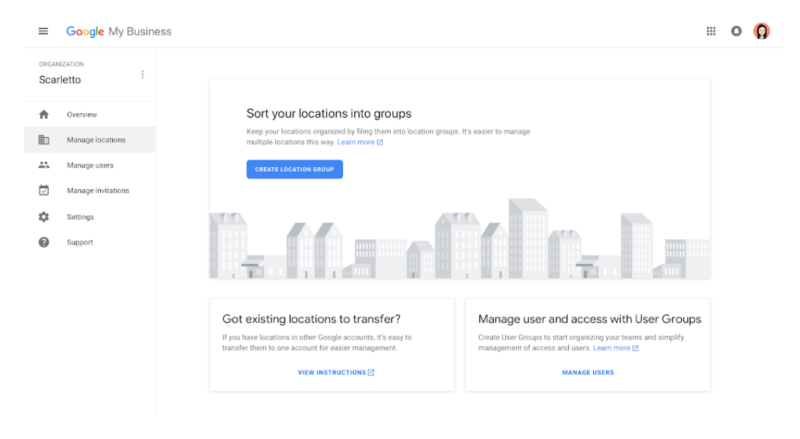 Last month, I attended the Local Search Association’s 2018 annual conference (LSA18) and was overwhelmed at the helpful information shared by the experts who spoke. I’d like to share some key takeaways and offer some insights of my own on local search.
Last month, I attended the Local Search Association’s 2018 annual conference (LSA18) and was overwhelmed at the helpful information shared by the experts who spoke. I’d like to share some key takeaways and offer some insights of my own on local search.
Local search must adjust
One of the main themes discussed centered around the fact that Google search today is less about displaying organic web page results and more about featuring Google products.
A typical query in Google search may bring back an abundance of Google-owned properties:
- Paid listings and ads.
- Knowledge panel.
- Review carousel.
- Local pack.
- News carousel.
- Images carousel.
- Research carousel.
- Refine by brand carousel non-Google SERP features.
- E-commerce URLs.
- Review URLs.
We are seeing result pages where Google features occupied virtually the entire page and organic web page results were barely visible.

The impact is clear: More and more information resides on Google’s servers instead of on the web itself. Google “curates” the vast majority of content users see, so webmasters must rely on Google’s platform and less on their independently owned websites.
To those who complained that traditional search engine optimization (SEO) relied too much on following Google’s rules, thanks for playing — you can now turn in your game card. We will soon be entering the local search arena on Google’s exclusive home turf.
How to survive Google’s new local search world
Much of the discussion at the conference focused on new updates Google has introduced over the past year. Below are some ways that were suggested to boost your search ranking within Google features.
1. Optimize your business’s Knowledge Graph
The Knowledge Graph has become the new source of information for SEO, which makes sense since the content is essentially pre-indexed for Google’s algorithm.
Google My Business (GMB) now allows owners to add much richer content than photos and basic listing information. Some of those updates are:
- Google Posts. Allows businesses to share dynamic content with users as distinguished from more permanent content such as name, address and phone number (NAP) information. Examples might include events, announcements or seasonal content. Posts may take the form of text, photos or video.
- Google Q&A. Users can ask questions about your product or service, and you or a member of the public can answer. This is a way to engage with customers and add relevant content to your listing.
- Google Messaging. Unlike Google Q&A, messages are personal and do not appear on your listing. Messages are sent to the business that responds directly to the customer.
- Google Bookings. Google bookings integrate with supported scheduling partners to provide appointments and reservations and insights through your GMB account.
2. Actively manage your Google My Business listing
The new features add significantly greater functionality to the GMB listing, but it also adds more work.
While it was always advisable to regularly check on the listing to make sure it hasn’t been updated with an aggregator’s outdated information or a prank photo, the new features mandate frequent, if not daily, checks.
For example, critics of the Google Q&A feature say it has become an open message board for the public. Instead of asking questions, some are leaving reviews, going off on rants, or even posting spam. Yet even legitimate questions left unanswered can reflect poorly on the business.
The new GMB features require frequent attention and some pampering in order to ensure their addition has a positive impact on your listing.
3. Test search results for your local business
Even though everything looks good from the inside, it’s important to step outside and see how the display window looks from the sidewalk, as the customer sees it.
With your GMB listing, sometimes the displayed result doesn’t match what you expect.
Even brands such as the Four Seasons Hotel find misinformation for their properties displayed both in search results and local maps. Here are some examples of wrong information affecting the Four Seasons brand:
- Misidentification of a hotel name with a former property location.
- Map pin that was dropped in the wrong location.
- Incorrect Knowledge Graph information stating a hotel golf course was public.
- Missing bridge on Google Maps that resulted in roundabout directions.
- Incorrect street names on Google Maps that affected directions to the property.
These problems were all reported and eventually fixed. This demonstrates the importance of viewing your business’s search results from the customer side.
4. Consider ads if you want to appear in the top search results
From 35 percent to 64 percent of local pack results now contain ads, according to data from Moz.com.

And AdWords ads are growing to take the lion’s share of local search engine result pages (SERP) results.

If you pay enough, AdWords also appear in the most prominent location at the top of the page. Thus, AdWords seems to be the best option for making sure you are listed at the top of search results.
5. Restructure web content to provide answers to questions
The graph above also points out the other type of content displayed prominently in the local SERPs is Google snippets.
These are excerpts from web pages that provide results that Google believes best answer what the searcher is looking for. Instead of just providing web page uniform resource locators (URLs), the snippet provides relevant information that in many instances foregoes the need to click through to the web page.
The snippet might contain a definition, an answer or a description on a topic, displayed in the form of a paragraph, a list or table.
Snippets reduce surfing, exploration of websites and business information and shorten discovery potential.
Instead, a single answer is deemed the best information and is served to the user. Now it’s a fight for getting your content to appear in a search snippet.
Optimizing your web content to provide answers to common questions in bite-sized digestible snippets will improve your chances of being featured in a snippet.
6. Utilize Google tools to help manage your client listings
Anita Yuen, product management director of Google My Business, explained updates to conference attendees and explained how their API tools and a new GMB agency dashboard can help marketers manage client listings at scale.
The new dashboard should be released this month and will feature the following:
- Single organization accounts on Google My Business to manage all locations and no longer limited to 100 locations.
- User groups to manage internal teams and control access to locations.
- Improved search functionality enabling users to efficiently search for locations within an account and across location groups.
- Easier workflows to send and receive invitations to manage listings.

Anita also discussed a new partner program highlighting key partners and providing early access to new information, as well as enhanced support for those partners.
Artificial intelligence (AI) and voice search means constantly shifting sands
Another reoccurring theme throughout the conference was changing technology and how we, as local search marketers, can adapt.
Adoption of new technology is creating windows of opportunity for competitors to carve out a niche for themselves and perhaps even become front-runners in certain areas. Technology is changing the way consumers interact with businesses and those of us that help businesses work more efficiently.
We need to embrace everything that offers opportunities for marketers to better compete in the local search space.
Opinions expressed in this article are those of the guest author and not necessarily Search Engine Land. Staff authors are listed here.
